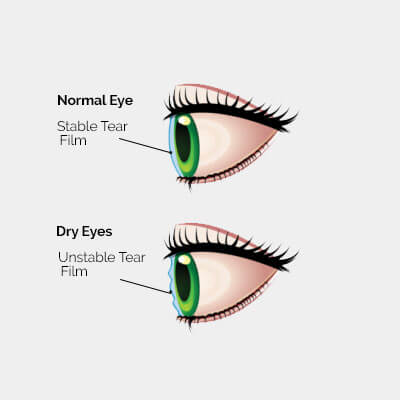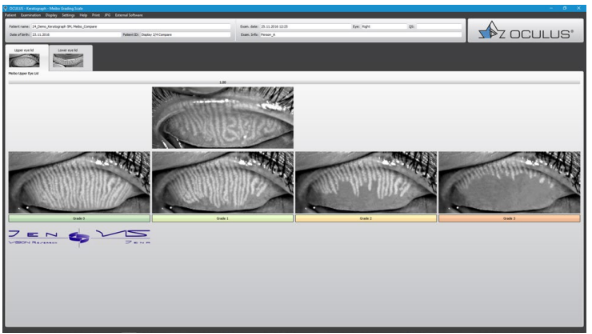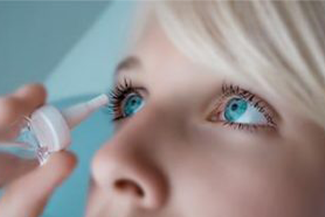What Is Dry Eye Syndrome? (DES)

Dry eye syndrome occurs when tear production and drainage are not in balance. People with dry eyes either do not produce enough tears or their tears are of poor quality. The result? Unpleasant symptoms, including itching, burning, redness, watery eyes, excessive tearing—and even eye pain. Dry eye syndrome can also increase your risk for more serious eye problems like corneal ulcers.
Without treatment or proper medication, DES can worsen over time.
What Causes Dry Eyes?
While over 80% of dry eye cases are due to blocked oil glands in the eyelids — a condition called meibomian gland dysfunction or evaporative dry eye — other factors can also cause this syndrome. These include:
Gender – the majority of dry eye sufferers are women. This tends to be caused by hormonal changes, whether through the use of contraceptives, pregnancy or menopause.
Age – there’s a higher prevalence of DES in those over 50 years of age
Environment – dry wind, dry air and dry climates can evaporate the tears. Home and car heaters, air conditioners, fans and hair dryers also cause tears to evaporate.
Medication – these include antidepressants, decongestants and blood pressure medications.
Auto-immune disorders – Sjogren’s disease and arthritis, among others.

How Do I Know If I Have Dry Eye Syndrome?
Do any of these symptoms seem familiar?
- Gritty, itchy, or stinging eyes
- Excessive tearing and discharge
- Eyes that feel tired or dry
- Increased light sensitivity
- Regularly using eye drops
- Discomfort that worsens as the day progresses
If so, you may have dry eye syndrome. Take our dry eye quiz to find out!
Oculus Keratograph
Introducing the new Oculus Keratograph at Wesson and Mothershed Eye Center
What patients find fascinating about the Oculus Keratograph is the sheer amount of information that this technology can produce in such a short amount of time when being tested. It not only measures tear break-up time, ocular irritation by rating the redness of the conjunctiva or white part of the eye, evaluating the thickness of the event of the tear layer or the oil layer of the tears as well as the ability to take pictures of the meibomian glands.
This is the most fascinating thing to bring up pictures of the patients’ glands in the exam room and grade them on a scale so that they can see exactly why they are having the symptoms they have from meibomian gland dysfunction. Oftentimes, we hear patients say “Oh my goodness, those are my glands!”


What Others Are Saying About Us


Lasting & Effective Dry Eye Treatment
Our dry eye treatment program is individualized to each patient according to the root cause.
We aim to restore or maintain the normal amount of tears in the eye to minimize dryness and discomfort. Book a consultation with one of our eye doctors, who can prescribe a customized treatment plan to keep your eyes healthy and comfortable all day, every day.























